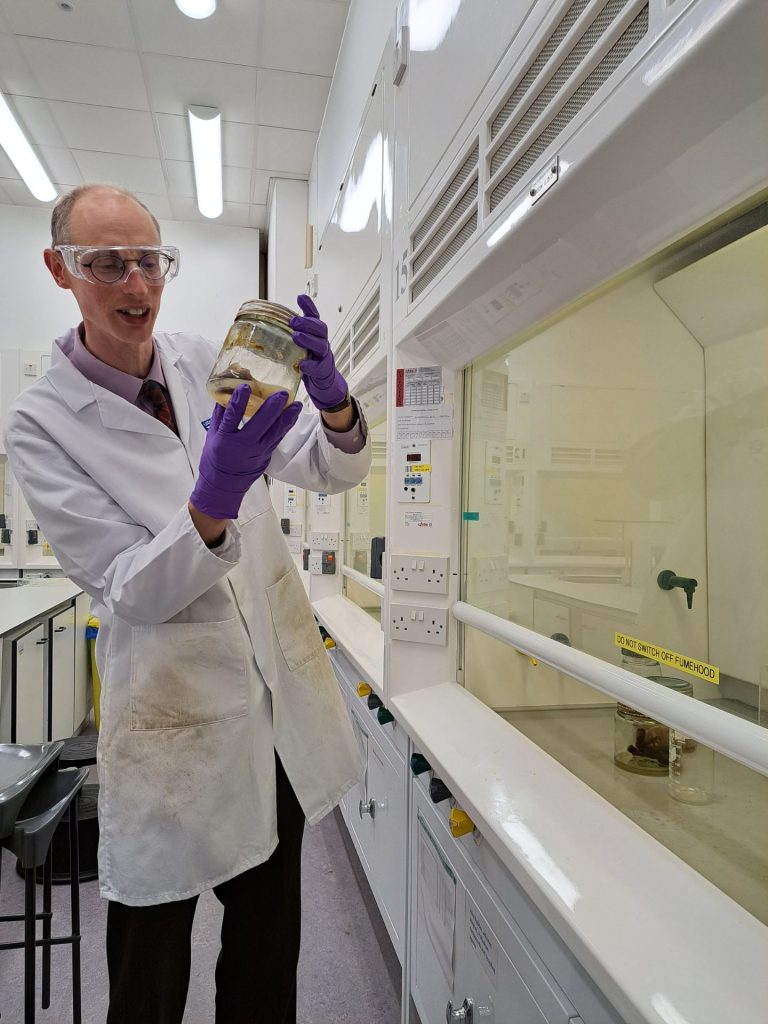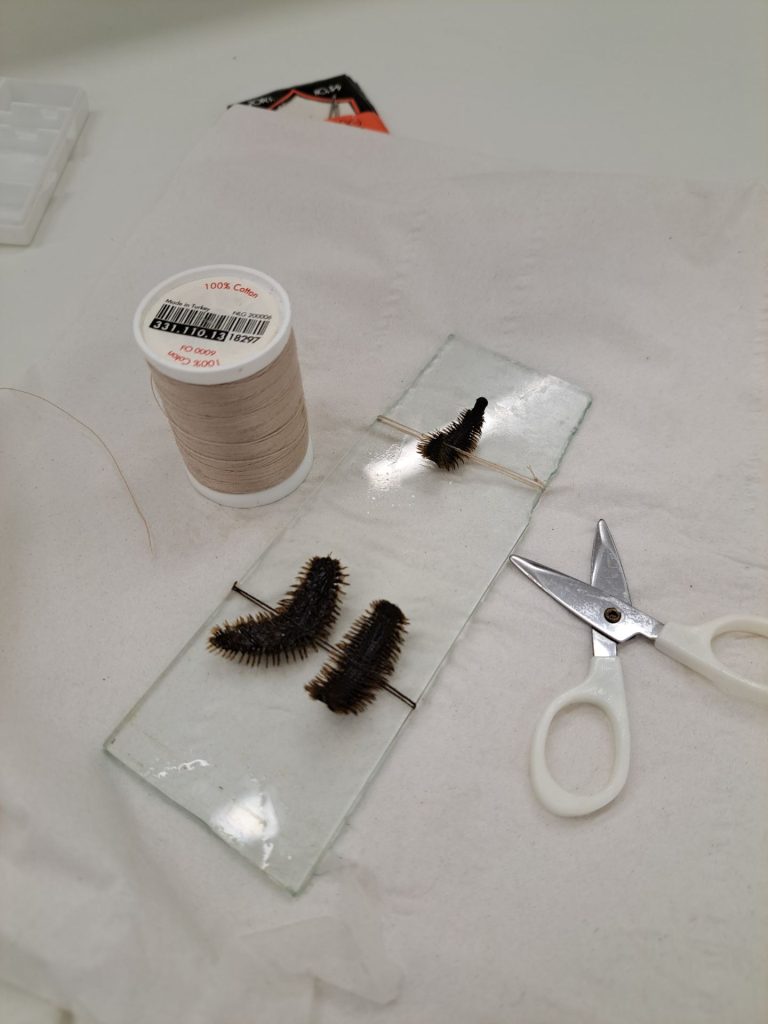What do coral, an octopus and a snake have in common? They are among the various specimens getting a bit of TLC in this year’s wet specimen preservation session.
Let me explain…
A huge selection of our collections are ‘wet specimens’. These are flora or fauna that are preserved, as the name would suggest, in various fluids – usually in a jar. Most of our specimens were preserved by D’Arcy Thompson himself when he collected them – in fancy jars (Copenhagen jars) with glass plugs for lids. There are various others – metal lidded jars (Kilner Jars) and acrylic cases, which all must be maintained in different ways.


Our curator Matthew Jarron gave us an in-depth crash course on how the specimens are preserved. Over the years, the ethanol or formalin in jars can evaporate, leaving the specimens vulnerable to drying and deteriorating, therefore it is imperative these are topped up to keep them in good shape. For most specimens it involves a slow bath in ethanol for each specimen gradually increasing in percentage until the solution is nice and clear – 20%, first, then 40%, then 60% (sometimes twice), eventually rising to 80%.
While not the most glamorous job in museums, it is incredibly important. It is conducted in special fume hoods in one of the labs in the School of Life Sciences but unsurprisingly that wasn’t quite enough to protect our nostrils from the stench of marine creatures that have been preserved long after their lifespan.

Occasionally the preservation process can take its toll on specimens – a bat’s wings will disintegrate; a snake will lose its scales or bright coral will seep colour. However, thanks to our careful care, the majority of our specimens look as good as new after the process!
Glass cutting was another skill we were shown – sometimes the lids on the glass jars need replacing and it is mandatory to cut the glass to fit a specific shape.
I was just finished transferring some kangaroo embryos to 60% ethanol when Matthew asked, “Fancy doing some sewing?” Red coral and a lone Scale Worm had fallen off the backing plate inside the jar and needed fixed back on. Rather tricky to do with latex gloves on, but I was proud of the results.

The next time you see wet specimens in a museum, just think of all the work it took to get them there in the first place – and the nostrils that were sacrificed in the process.
Our D’Arcy Thompson Museum is open this Thursday (22/09/22) 6-7pm.
Follow us on Instagram for behind the scenes footage @uodmuseums